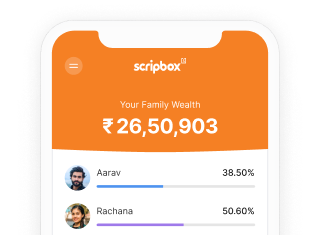India’s alternative assets market is likely to increase five times to US$ 2 trillion by 2034. It oversees assets worth US$ 400 billion as of December 2024. This growth is led by portfolio diversification, sophistication on the part of investors, and positive regulatory environments.
Among these alternative instruments are Alternative Investment Funds (AIFs) and Portfolio Management Services (PMS).
But how are PMS and AIF different? Let’s figure it out.
PMS vs AIF
A PMS is a personalised investment service where a qualified portfolio manager actively manages an individual investor’s securities and assets to meet their specific financial goals. Investments are made in stocks, bonds, and structured products.
While, an AIF is a pooled investment vehicle that collects funds from multiple investors and invests in accordance with a defined investment policy for their benefit.
AIFs are regulated by SEBI and typically invest in assets beyond traditional stocks and bonds.
There are three categories of AIFs in India:
Category I – Invest in start-ups, SMEs, infrastructure (economically and socially desirable sectors).
Category II – Private equity funds, real estate funds (do not undertake leverage or borrow other than for day-to-day operations).
Category III – Hedge funds and funds that employ complex trading strategies and leverage.
Both have a unique structure, risk-return profile, and suitability based on the financial objectives of the investor.
| Aspect | PMS | AIF |
| Structure | Individual portfolios are managed separately. | Pooled funds from multiple investors. |
| Regulation | Governed by SEBI (Portfolio Managers) Regulations, 1993. | Governed by SEBI (Alternative Investment Funds) Regulations, 2012. |
| Minimum Investment | ₹50 lakh | ₹1 crore |
| Investor Base | HNIs, UHNI, family offices, institutional investors, and accredited investors. | Primarily HNIs, UHNI, family offices, institutional investors, and accredited investors. |
| Customisation | High; portfolios tailored to individual preferences. | Limited; follows the fund’s predefined strategy. |
| Liquidity | Generally higher; subject to portfolio holdings. | Varies; are often subject to lock-in periods, especially in closed-ended funds. |
Factors to Consider When Choosing Between AIF and PMS
1. Risk Profile
PMS: It is a high risk product. Since the focus is more on equities, the risk is higher. The portfolios can also contain illiquid assets like private equity or small-cap stocks, which are more difficult to sell in declining markets and thus more risky.
AIF: AIFs tend to carry greater risk owing to exposure to private markets, unlisted shares, and sophisticated strategies. Lack of liquidity and low transparency may also contribute to the risk.
2. Return Expectations
PMS: Returns depend on the manager’s strategy and market conditions. PMS can deliver strong performance through active stock selection and tactical allocation, especially over longer horizons.
AIF: The return potential depends upon the category. The potential of return is high but uncertain in the case of Category I as such funds invest in startups in an initial phase. Category II AIF can provide steady returns with moderate risks. The potential of return and risk involved in this category vary with the nature of investment you make. In Category III AIFs, the return potential is highest amongst all. Even though these funds may perform better compared to other categories, they carry greater volatility and market-linked risk.
3. Investment Horizon
PMS: Suitable for investors with a medium to long-term horizon (at least 3 years).
AIF: Depends upon the category selected. Category III does not have a lock-in period. Category I and Category II have a minimum lock-in period of 3 years.
4. Flexibility
PMS: Provides significant flexibility in portfolio customisation, allowing alignment with specific investor preferences.
AIF: Provides limited flexibility; investors stick to the fund’s investment strategy.
Benefits & Drawbacks of AIF vs PMS
1. Alternative Investment Funds (AIF)
Benefits:
- Access to niche investment opportunities (private equity, hedge funds, real estate).
- Managed by experienced fund managers with diversified strategies.
Drawbacks:
- Higher lock-in periods, reducing liquidity
- Less transparency compared to PMS
2. Portfolio Management Services (PMS)
Benefits:
- Personalised investment strategies
- Direct ownership of securities
- Greater liquidity compared to AIFs
Drawbacks:
- Taxation applies at the investor level in all cases.
- Market fluctuations can directly impact the portfolio.
Conclusion
Both AIF and PMS present attractive routes to wealth creation, but the choice depends on your investment approach, risk tolerance, and objectives. If you prefer transparency, direct holding, and active portfolio management, PMS could be your choice. Alternatively, if you want to tap into niche, diversified opportunities with a long-term perspective, AIFs could be your best bet.
As India’s alternative assets market surges towards a US$ 2 trillion future, now is the moment to make informed, strategic investment decisions. Still unsure which path best suits your financial goals? Reach out to Scripbox’s advisors and receive a customised investment plan crafted specifically for you.
FAQs
Since investors own stocks directly and can personalise their portfolios, PMS offers personalisation. However, AIFs follow a pre-determined investment strategy that leaves little opportunity for personalisation.
Yes, AIFs have the advantage of investing in alternative assets such as private equity, venture capital, hedge funds, and distressed assets, which may not be accessible through PMS. Also, AIFs can take leveraged bets.
PMS provides investors with better liquidity as they can sell their holdings anytime. AIFs typically have lock-in periods and exits depending on the fund’s structure, which may restrict liquidity.
Yes, NRIs can invest in both PMS and AIFs, but they must comply with RBI and SEBI regulations. Some restrictions may also apply depending on the country of residence of the investor.
PMS offers regular, detailed reports, such as individual security holdings, transactions, and performance reports. AIFs provide periodic reports but are not as transparent as PMS since investments are pooled and managed collectively.
Explore other PMS article:

















Show comments